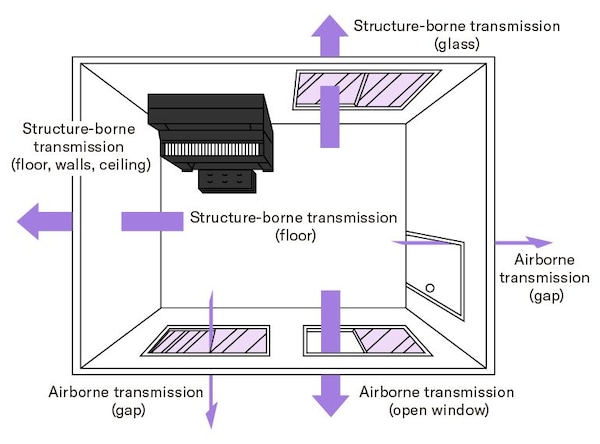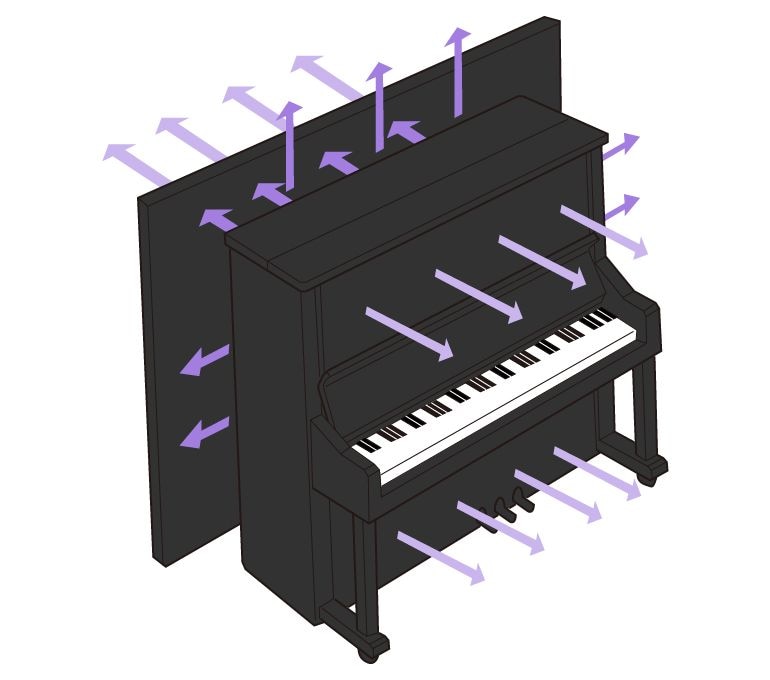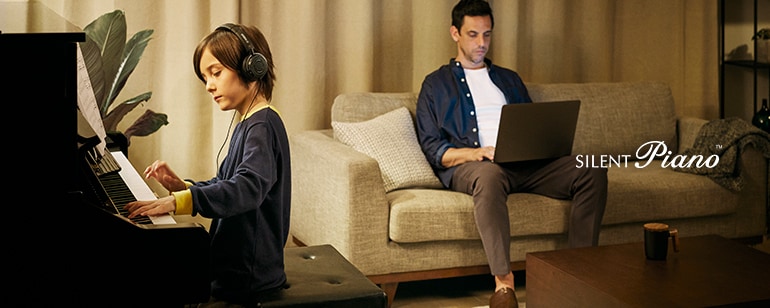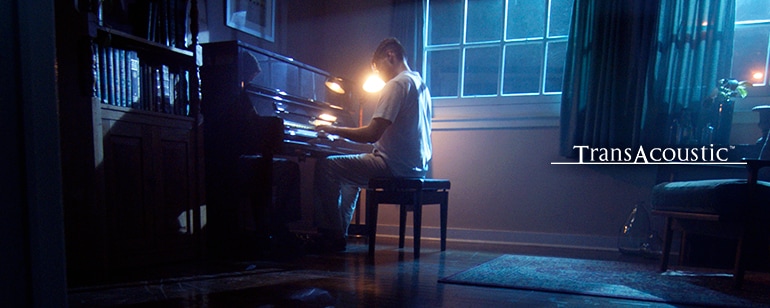Tips for Soundproofing
Consideration for sound
We are surrounded by an enormous variety of sounds in our everyday lives. How we hear these sounds is dramatically affected by the surroundings and by the state of the listener. Understanding the way that sound is transmitted to the surrounding area is the first step to enjoying beautiful piano sound.
How sound is transmitted

Categorizing sound by how it is transmitted
There are two ways that sound is transmitted.
Airborne sound: Sound that spreads from the piano through the air, passing through gaps in doors and open windows, etc.
Structure-borne sound: Vibrations that are transmitted from the piano through its casters to the floor and walls, and then radiated as sound
Taking your neighbors into consideration, it is important to be careful of airborne sound in well-ventilated houses, and of structure-borne sound in collective housing such as apartments and condominiums, which are highly sealed.
Upright pianos transmit sound to the rear, while grand pianos transmit it upwards and downwards
Different piano types exhibit different characteristics in the ways that sound is transmitted.
・ Upright pianos are notable for the loud volume of the sound transmitted to the air and walls from their rear surface.
・ Grand pianos are characteristically loud in the upward and downward directions.
Sound transmission from an upright piano
Sound transmission from a grand piano
Specific tips for soundproofing and sound insulation
Install your piano
・ In a location that is not in direct contact with an exterior wall
・ As far away as possible, taking neighbors into consideration
Specific hints and tips

・ Close windows and storm shutters
・ Use heavy or double-layered curtains
・ Use a sound muffling mechanism
・ Attach a sound insulating board to the rear of an upright piano, or to the underside of a grand piano
・ Install thick carpeting on the floor
・ Seal gaps in windows and doors
Suggestions from Yamaha
SILENT Piano TM and TransAcoustic TM Piano
These unique products from Yamaha utilize a combination of digital and acoustic technologies that offer you the enjoyment of an acoustic piano without having to worry about the sound. Please refer to the product pages below for details.
Musical Instrument Guide : Piano Contents
Origins
Structure
How to Play
How the Instrument is Made
Choosing an Instrument
Care and Maintenance
Trivia
- The White Keys and Black Keys Were Reversed on Pianos in Mozart's Day
- Did Mozart's Piano Have a Pedal-Board?
- Piano with Automatic Accompaniment System in Beethoven's Day
- The Pianos Beloved by the Great Master, Sviatoslav Richter
- The Optimal Material for Piano Frames Is Also Ideal for Motorcycle Engines
- The Piano Soundboard Is a Board that Also Stops Vibrations
- Why Can't There Be More Than 88 Keys on a Piano?
- Why a Grand Piano Keyboard Feels Heavier Than an Upright Keyboard?




